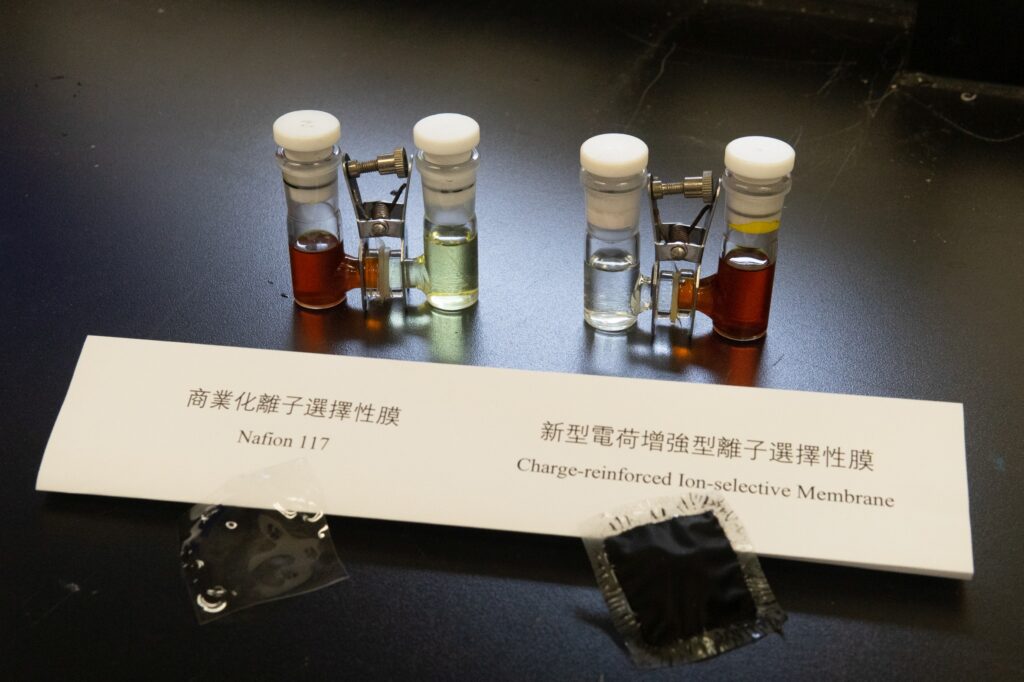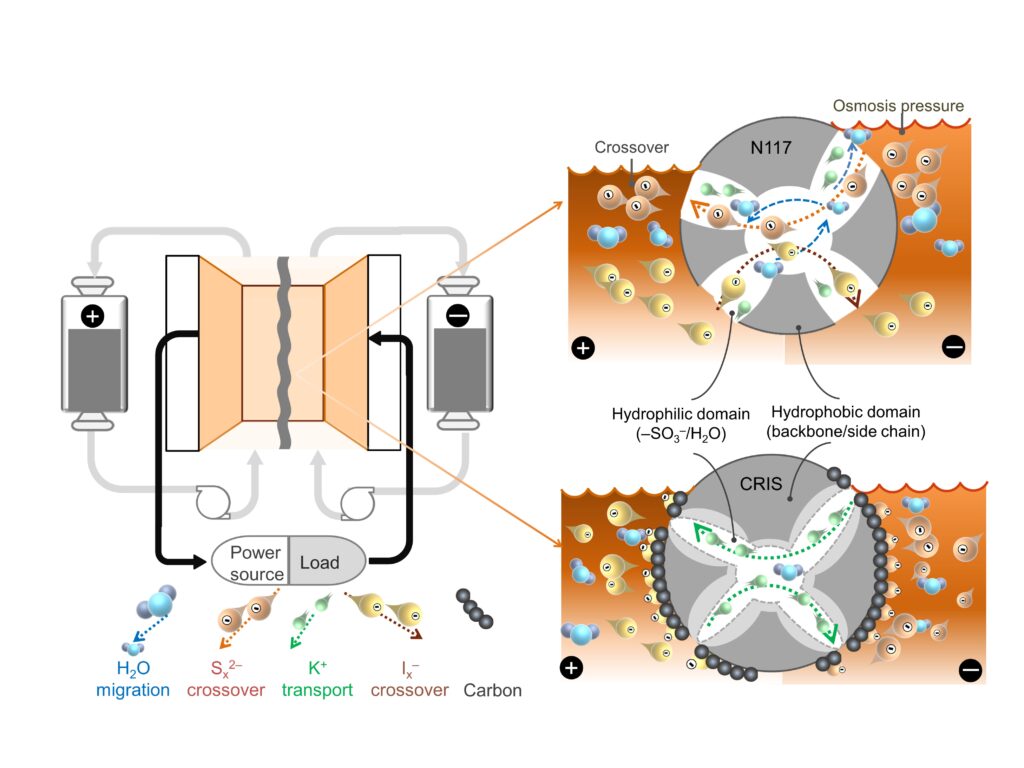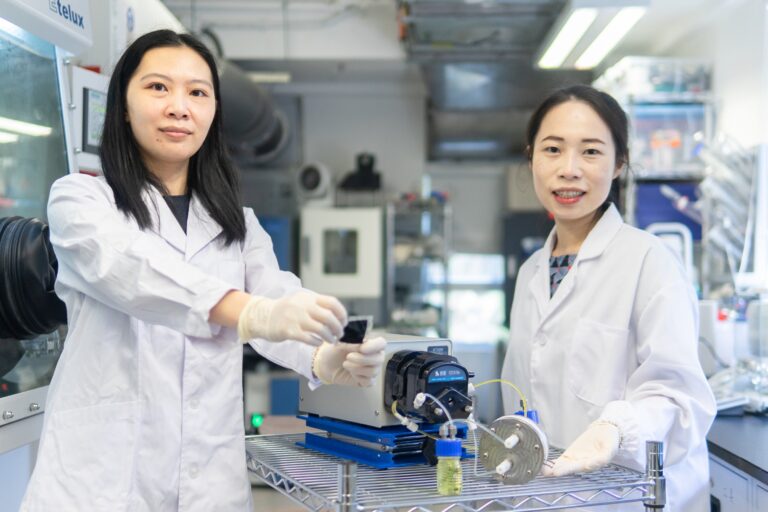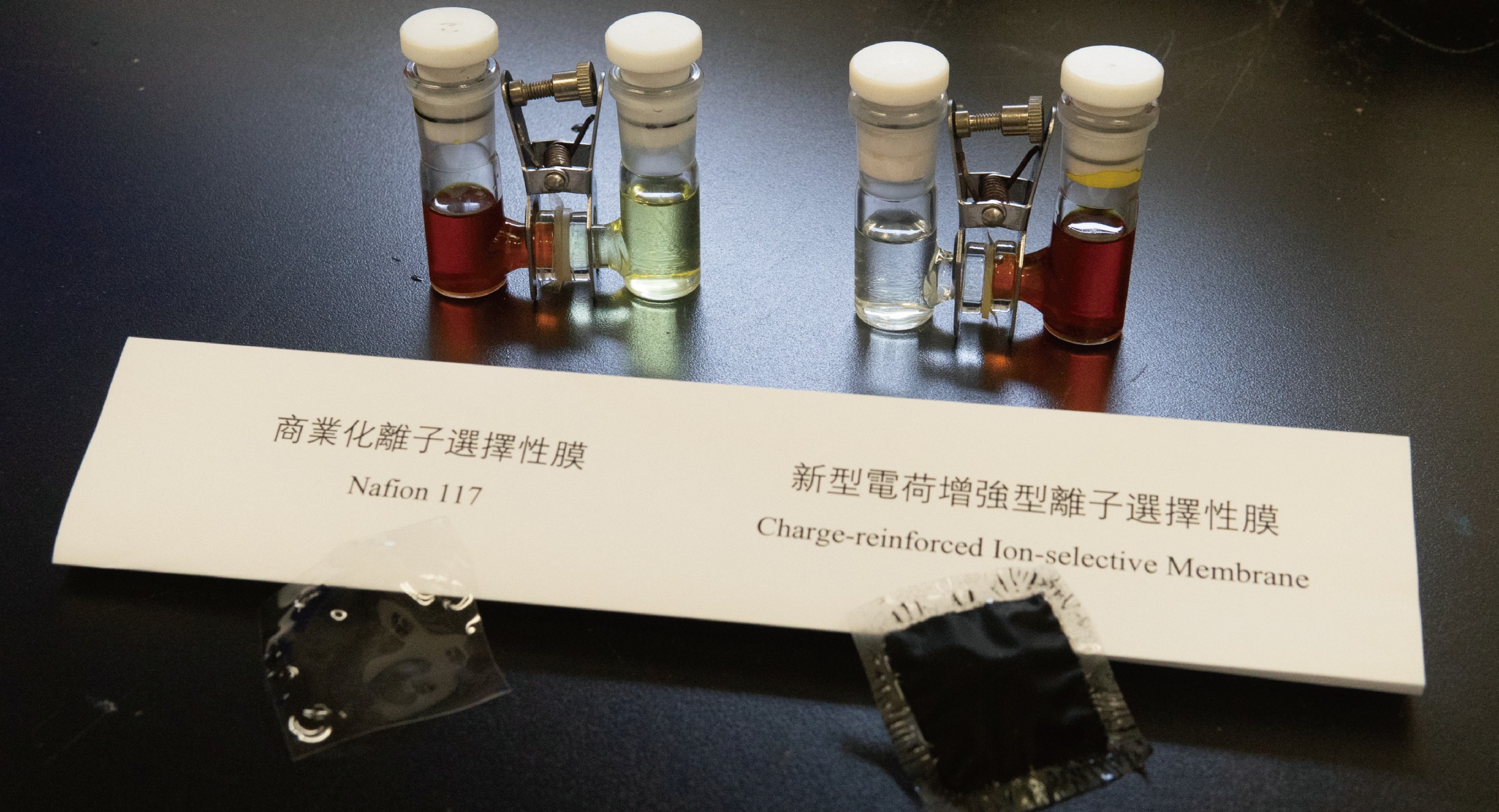This project designs a novel charge-reinforced ion-selective (CRIS) membrane for sulphur-based redox flow batteries, with 15 consecutive hours of runtime and over 2,000 hours cycling without obvious capacity decay is developed. The new battery has taken a significant step forward in the practical application of redox flow batteries in grid-scale storage for renewable energy, by resolving the problems posed by its poor lifetime and low cost-effectiveness.


Uniqueness and Competitive Advantages:
- Increases the stability and the lifetime of batteries and provides an effective application in grid-scale energy storage devices.
- An ultralow capacity decay rate (0.005% per day), achieving record high cycling stability and calendar lifetime with over 2,000 hours cycling
- The coulombic efficiency is more than 99.9%
- A competitive levelised cost of storage (LCOS) when continuously operated and discharged for more than 15 hours

